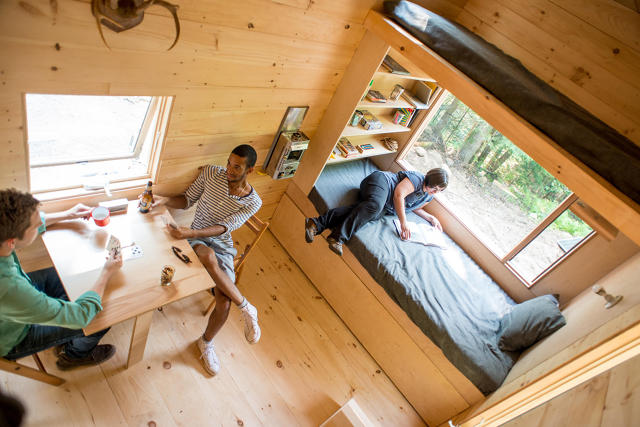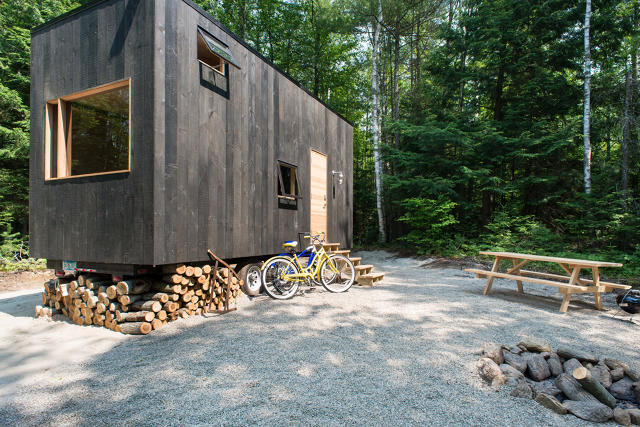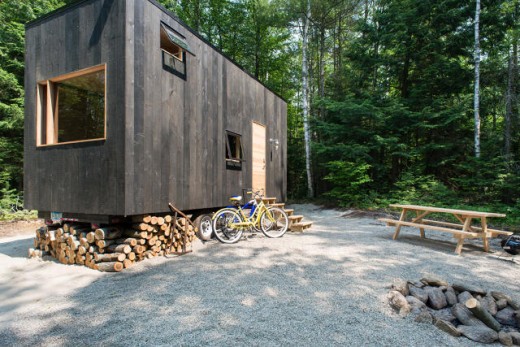From Harvard Innovation Lab, A Startup To Help Take Tiny Houses Mainstream
Don’t want to ditch everything for a tiny house? With Getaway, rustic small-space living can be yours for a night.
Tiny houses occupy a curious position in our cultural consciousness. They’re a cottage industry, but are also a full-fledged lifestyle movement with devotees and fans spanning the entire globe. But even though they command a freak fascination that’s borderline obsessive for some, most people still think of them as curios, not viable living situations. A startup called Getaway wants to make that lifestyle less of an aspiration and more of a reality.
Getaway emerged from the Millennial Housing Lab, a Harvard Innovation Lab project founded by Jon Staff, a Harvard Business School student, and Pete Davis, a Harvard Law School student. “There’s a huge gap between people who post stories to Facebook about living in tiny houses and people who actually live in one,” Davis says. “We want to add a rung to the ladder so people can ‘test drive’ a tiny house.”

The zeal for tiny house living ties into a desire to take a step back from the increasing complexity of modern life. “Tiny houses are a double-edged sword—they capture the imagination of some and turn some people away,” Staff, who is Getaway’s CEO and has lived in a handful of unconventional small spaces, says. We’re inundated with screens, technology, congested cities, and oftentimes with too many things. More often people want less. (For example, Marie Kondo, the Japanese organizer and domestic-purging doyenne, has sold over 2 million copies of her book on how to declutter.) Additionally, tiny houses embody a lifestyle of efficiency and consuming fewer resources. A smaller physical footprint yields less environmental impact than a McMansion. If the tiny house movement went mainstream, sprawl could be curtailed, less energy would be expended on heating and cooling expansive interiors, and residential neighborhoods could become denser. Since smaller houses often cost less to build than their conventional counterparts, more people could potentially afford their own abodes.
Staff believes that there’s been an urban-rural divide over the decades. Traditionally people needed to go into cities for jobs but technology has afforded the ability for many to work from wherever they want. “This generation has the opportunity to experience the best of both worlds,” Staff says. “More people are flexible and can have a better work-life balance.”
Davis points out the portability of some tiny houses. “You can live on the coast or in the mountains and I think that mobile aspect resonates with people.”

Staff and Davis left the house’s architecture in the hands of Addison Godine, Wyatt Komarin, Rachel Moranis, all students at Harvard’s Graduate School of Design. A mobile 160-square-foot structure, the Ovida is Getaway’s first cabin. It’s located two hours north of Boston—far enough from the city so you can see the stars, but not so far that the journey becomes a hassle—and is bookable online. The cabin sleeps up to four people and starts at $99 a night.
“By building small, you’re able to use high-quality materials and you can invest in every inch of the space,” Staff says. “And people notice that. Everything is wood and metal—real materials, no composites, nothing fake. Tiny houses make you more introspective about how you live. You ask, what do I need, what do I want, what would my life would be like if I could simplify?” To that end, the Ovida cabin is restrained so guests can sample what unfussy living is like.
Much like you’d expect from a rural retreat, the cabin exudes a back-to-the-land ethos through its wood-clad interior and no-frills design. It’s outfitted with a queen bed, zinc shower, and composting toilet. The kitchen has a small hot plate and enough utensils to make most meals (though you probably want to pick another time to show off your Iron Chef skills).

Though Getaway is starting out as a vacation option, Staff and Davis view it as a first step to tiny house domination. If people can hack it for a weekend, maybe they’ll commit to building their own tiny house instead of just living vicariously through blogs. The Millennial Housing Lab’s mission is about exploring new models for living and making it viable. In addition to architecture, they’re keen on exploring the composition of neighborhoods, building community, and seeing how policy can make financing a tiny house more viable. (Banks are often leery of lending for unconventional structures, not just tiny houses.)
“If we have our way, people don’t have to ‘get away’ to a tiny house in the country,” Davis says. “It won’t be an escape, it’ll be an integrated part of their daily life.”
Is staying in one of Getaway’s cabins seductive enough to make people heave all their worldly possessions and build a tiny house from scratch? Probably not. But for those who are already on the fence with the means to actually do it, it could be a potent catalyst.
Fast Company , Read Full Story
(126)














